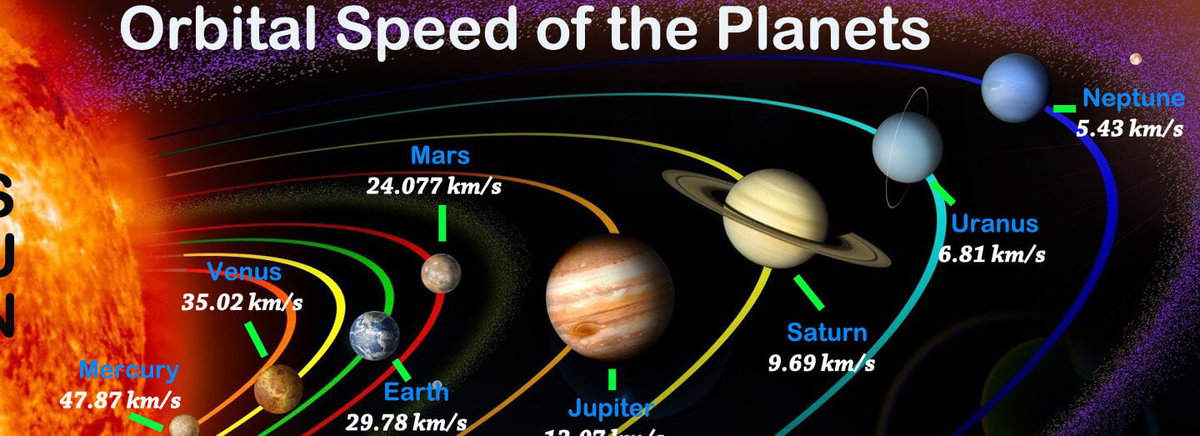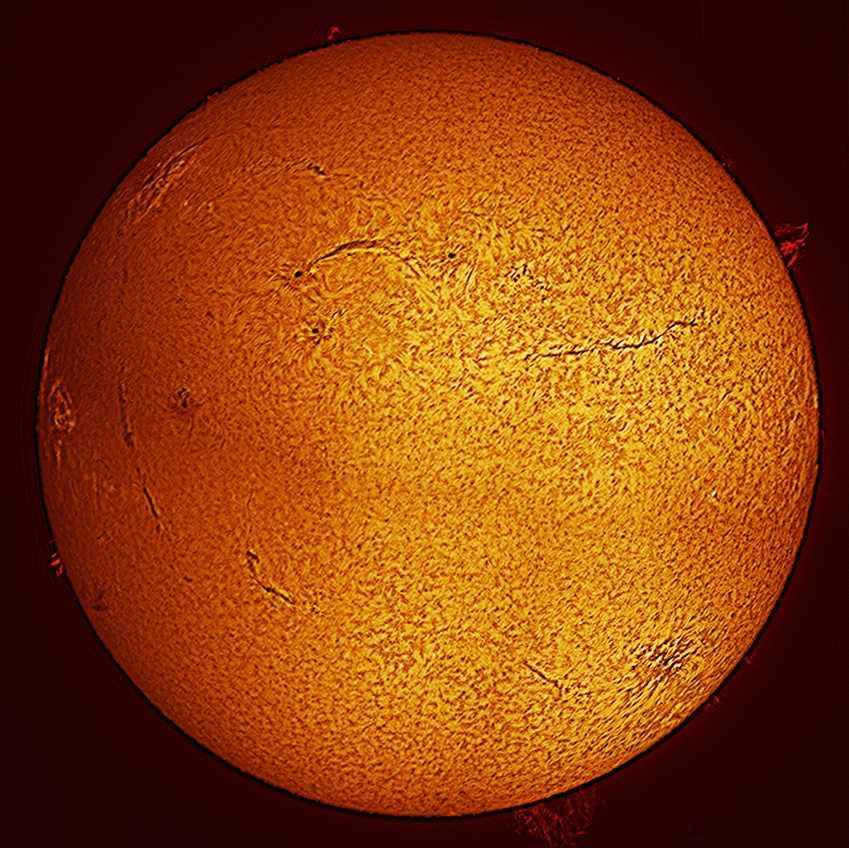
When viewed from our planet, the measured rotation rate of the Sun is 24.47 days, but if you subtract the Earth’s rotation around the Sun, it becomes 25.38 Earth days.
Astronomers refer to this as the sideric rotation period, which differs from the synodic period in the duration it takes for the sunspots to complete a full rotation around the Sun as seen from Earth.
The rotation rate of the sunspots decreases as they approach the poles, resulting in a rotation period around the axis that can be as long as 38 days at the poles.
Observations of the Sun’s Rotation
By observing the spots on the surface of the Sun, one can clearly see its motion. These spots move around, indicating that the Sun is rotating around its axis.
Observations reveal that the Sun does not rotate as a solid body, but rather in a differentiated manner.
This means that the Sun rotates at different speeds at different latitudes. It rotates faster at the equator and slower at the poles. This differential rotation is also observed in gas giants like Jupiter and Saturn.
Astronomers have measured the rate of rotation of the Sun from a latitude of 26 degrees from the equator. They found that it takes 25.38 Earth days for one complete revolution around its axis. The axis of rotation is inclined at an angle of 7 degrees and 15 minutes.
The Sun’s movement within the Milky Way galaxy
Just like a solid, the inner regions and core of the Sun rotate together. However, the convective zone and photosphere, which are the outer layers, rotate at different speeds.
The Sun’s rotation around the center of the galaxy
Our star, the Sun, and we, as part of the solar system, orbit around the center of the Milky Way galaxy. This movement occurs at an average speed of 828,000 km/hour. One complete revolution around the galactic center takes approximately 230 million years. The Milky Way is classified as a spiral galaxy, consisting of a central core and four main arms, each divided into several shorter segments.
The Sun is positioned in close proximity to the Orion arm, which lies between the two major arms known as Perseus and Sagittarius.
The diameter of the Milky Way is approximately 100,000 light years, and the Sun is positioned around 28,000 light years away from the Galactic center. There is a proposal that our spiral galaxy possesses a junction; however, confirming this hypothesis presents significant challenges.
Enjoyed reading this article? Share it with your friends!
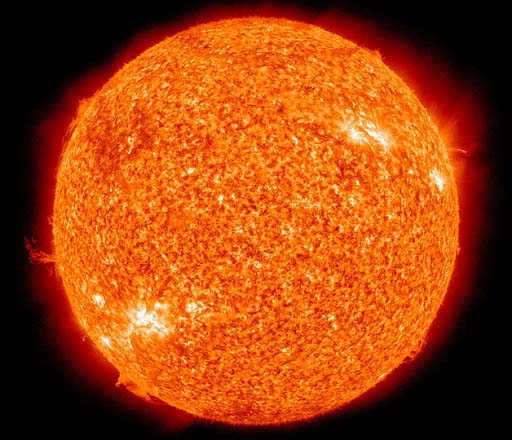
The Sun, a yellow dwarf star, is the central and sole star in our solar system, comprising 99.86% of its total mass. The remaining fraction of mass is distributed among the various planets, satellites, asteroids, and other celestial bodies that orbit around the Sun.
Physical Characteristics of the Sun
Mass and Size.
The Sun has a diameter roughly 109 times larger than that of the Earth, measuring approximately 1.4 million kilometers. Its mass is approximately 333,000 times greater than that of the Earth, totaling around 1.99-10^30 kilograms.
Temperature.
The temperature on the star’s surface is extremely high, reaching approximately 6000 degrees. This high temperature causes the sunlight to appear almost white, although it appears slightly yellowish to us due to scattering and interaction with Earth’s atmosphere.
However, the temperature at the core of the Sun is even more astonishing, reaching around 14 million degrees.
Orbit and rotation.
The Sun travels in its orbit around the center of the Galaxy at an incredibly fast speed of 217 km/s. As a result, it completes a full revolution around the center in approximately 200 million years.
Details about the Sun
The Sun has an estimated age of around 4.57 billion years, making it a relatively young star in cosmic terms. However, scientists believe that it will continue to exist for many more years to come.
One concern, though, is that the Sun is gradually increasing in brightness as it consumes its hydrogen fuel. It is predicted that in approximately one billion years, the Earth’s surface may become uninhabitable, forcing living beings to seek refuge underground or in the oceans.
The Sun is incredibly luminous, even though it is not the brightest star in the entire Universe. It is dangerous to directly observe the Sun with the naked eye or optical devices due to its intense brightness. However, it is safe to view the sunrise or sunset, as long as appropriate light filters are used.
Solar eclipses occur when the Moon obscures the Sun. On average, these celestial events happen 2-3 times per year.
The solar particle flux is responsible for several phenomena that have a significant impact on us.
The Significance of the Sun in Human Life
- – The heat we receive from our star.
The Moon
The surface of our only satellite is adorned with craters, creating beautiful patterns visible on clear nights.
The Planet Saturn
The second largest planet in the solar system is famous for its intricate ring system, consisting of four rings encircling Saturn.
© Naturae.ru, 2015-2023
Copying materials from the site is permitted only with an active link to the source.
Get one of the most popular articles delivered to your email once a day. Follow us on Facebook and VKontakte.
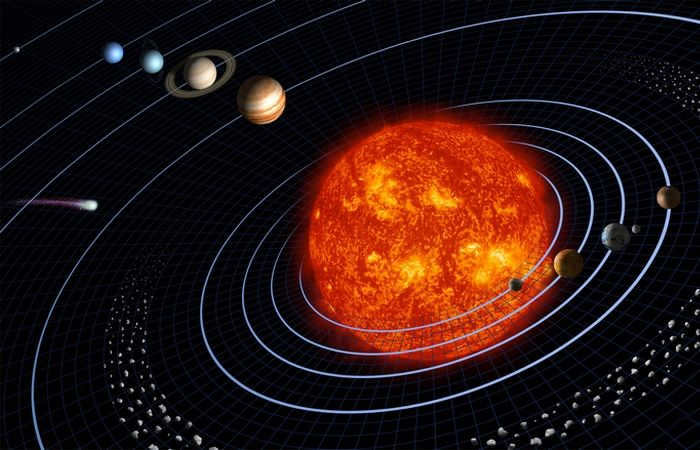
The sun is considered the “central” entity in the solar system, with all the planets and satellites orbiting around it. Experts suggest that even a minor alteration in the sun’s mass or size would have catastrophic consequences, rendering life on Earth impossible. In order to captivate our audience, we have compiled a collection of fascinating details about this singular star within our solar system.
1. The Sun is incredibly large
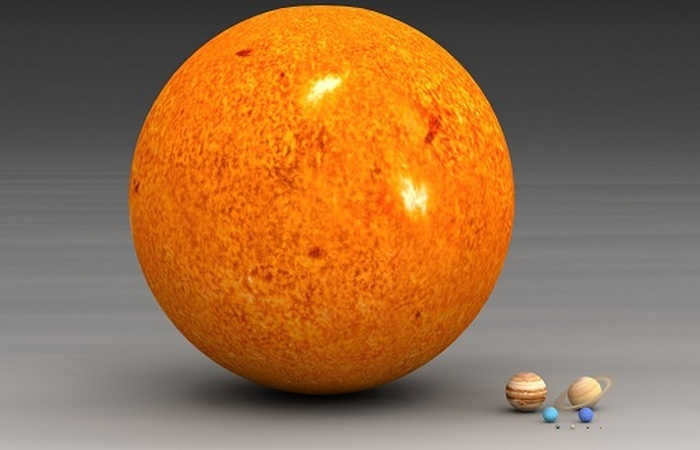

In reality, the Sun accounts for more than 99.8% of the overall mass of the Solar System. This is not an error – all the planets, their moons, and other celestial bodies collectively make up less than 0.2% of the mass of the solar system. To be more precise, the mass of the Sun amounts to approximately two nonillion kilograms (that’s two followed by thirty zeros). In terms of size, the Sun is equivalent to about 1.3 million Earth-sized planets.
Interestingly, the mass of the Sun frequently serves as a standard unit of measurement in astronomy for large objects. When discussing stars, nebulae, or even galaxies, astronomers often compare their mass to that of the Sun.
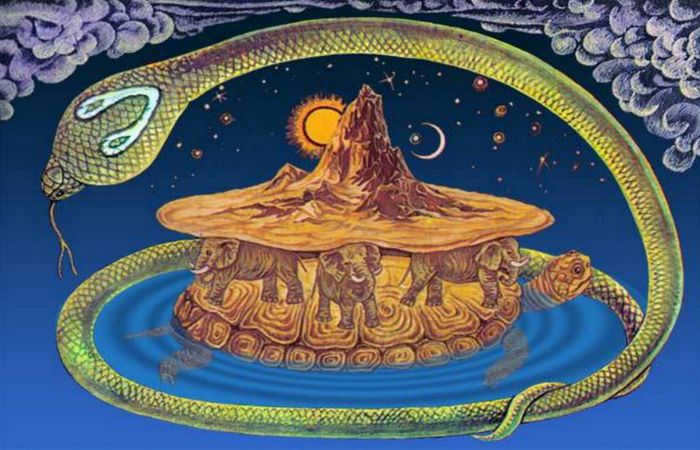
While we have just discussed it, the Sun is actually quite massive, although this is only in comparison to other objects within our solar system. However, there are much larger entities in the vast expanse of the universe. The Sun is categorized as a G-type star, commonly referred to as a yellow dwarf.
As the name implies, there exist significantly larger stars that are classified as giants, supergiants, and hypergiants. One such example is the red supergiant Uy Shields, which is located 9,500 light-years away from Earth. It currently holds the title of the largest known star, boasting a diameter approximately 1,700 times that of the Sun. Its circumference measures a staggering 7.5 billion kilometers. Even light itself requires nearly seven hours to complete a full orbit around this colossal star. If Uy Shields were positioned within our solar system, its surface would extend beyond the orbit of Jupiter.
3- The outcome of the Sun’s demise
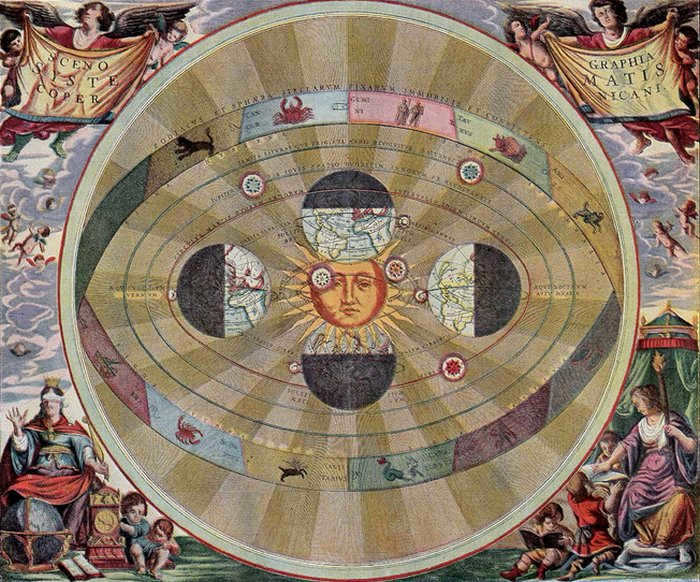

Stars have incredibly long lifespans, lasting billions of years, but eventually they meet their end. The destiny of a star is determined by its size. Smaller stars leave behind remnants known as brown dwarfs. Larger stars, however, die in a more violent manner, transforming into supernovae or even hypernovae and collapsing into either a neutron star or a black hole. In exceptional cases, these colossal stars may even explode, resulting in a spectacular gamma-ray burst.
The Sun is positioned in the center – it will not burst, however, it will not “shrink” either. Once the Sun depletes its hydrogen fuel, it will initiate a process of self-collapse, resulting in the core becoming more compact and hotter. Consequently, the Sun will enlarge, transforming into a red giant. Ultimately, it will contract into a white dwarf, a minuscule stellar leftover with remarkable density (comparable in size to Earth but possessing the mass of the Sun).
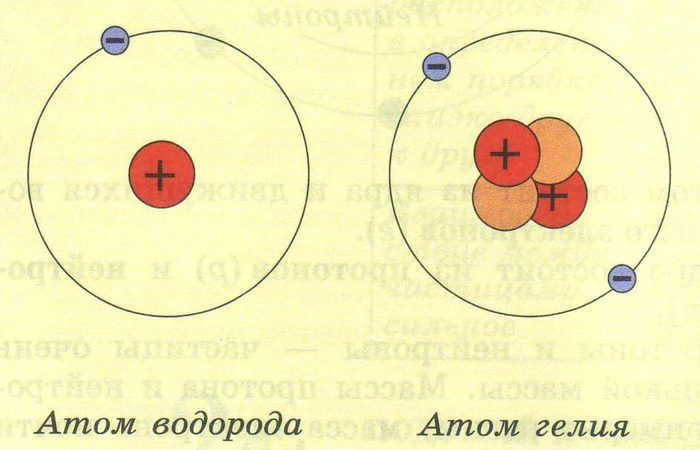
The Sun consists mainly of hydrogen and helium, similar to the majority of stars. To be more specific, it is composed of approximately 71% hydrogen, 27% helium, and the remaining 2% is comprised of small amounts of various chemical elements, predominantly oxygen and carbon.
5. The Sun’s temperature
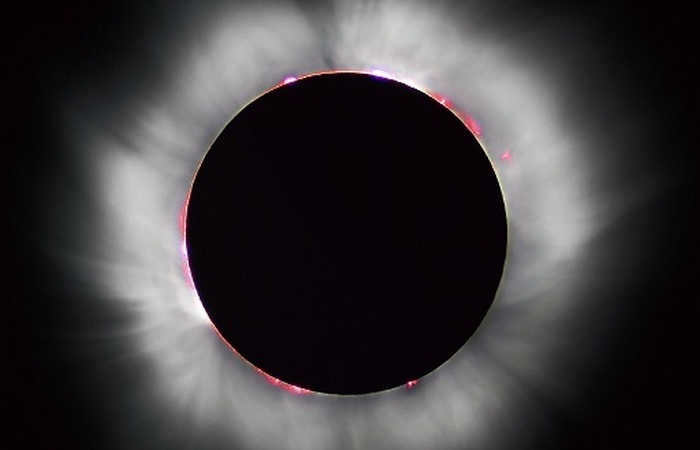
The temperature of the Sun varies depending on the specific region we are referring to. The core of the Sun is extremely hot, with temperatures reaching a staggering 15 million degrees Celsius. In contrast, the chromosphere is relatively cooler, measuring only a few thousand degrees. However, in the Sun’s outer layer, known as the corona, the temperature rapidly escalates to millions of degrees. The exact reasons behind this phenomenon remain unknown to scientists.
6. What is the age of the Sun

The age of the Sun is estimated to be approximately 4.6 billion years. Scientists have determined this age by studying other objects in the solar system that can be dated with more accuracy, such as meteorites and rocks found on Earth. It is important to note that this calculation is based on the assumption that the solar system formed as a whole. G-type stars like the Sun typically have a lifespan of around 9 to 10 billion years.
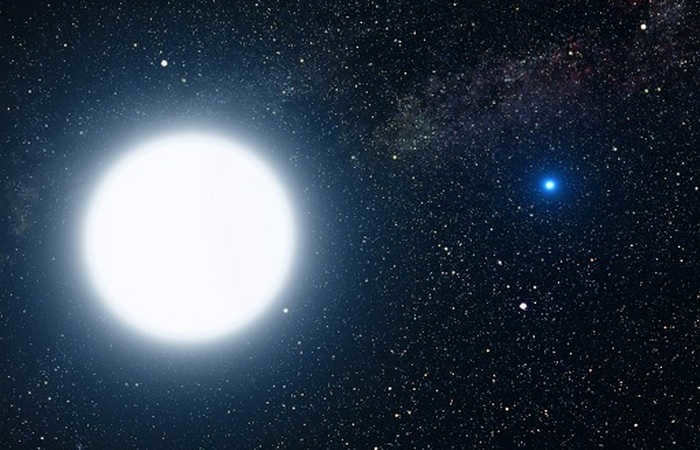
Sirius A is of massive size, while its companion star, Sirius B, is considerably smaller in comparison. It is evident that the Sun shines the brightest in the sky during the day due to its close proximity to Earth, surpassing all other stars. However, when it comes to the night sky, the most brilliant star is Sirius, followed by Canopus as the second brightest.
Apparent stellar magnitude is the term used to denote the brightness of a celestial object as observed from Earth. With an apparent magnitude of -27, the Sun holds the record for being the brightest.
8. The speed at which the Sun rotates
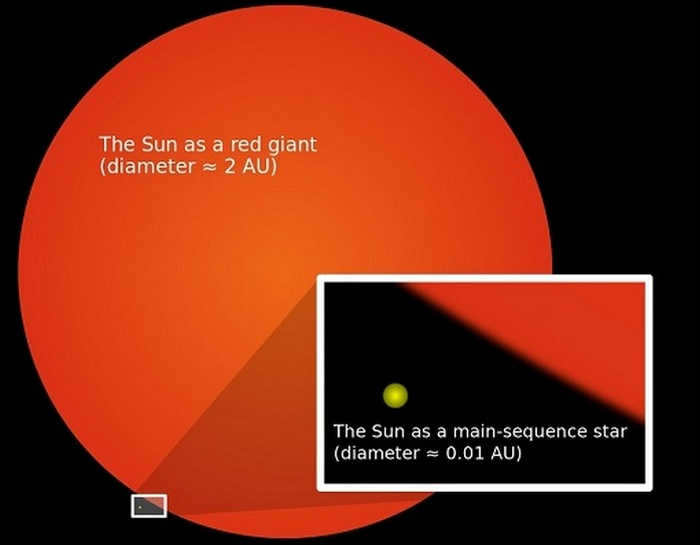
Calculating the rotation of the Sun can be challenging due to its regional variations. To put it simply, the Sun completes one full revolution in approximately 25.4 days. However, unlike the Earth, the Sun does not rotate as a solid body. Its rotation is fastest at the equator, taking about 24.5 days, and slowest near the poles, with a rotation period of around 38 days.
When it comes to the Sun’s speed in the universe, the entire solar system orbits the center of the Milky Way at a velocity of 828,000 km/h. This means that it takes approximately 225 to 250 million Earth years for the Sun to complete one revolution around the galactic center, which is known as a galactic year.
9. What is the definition of sunspots?
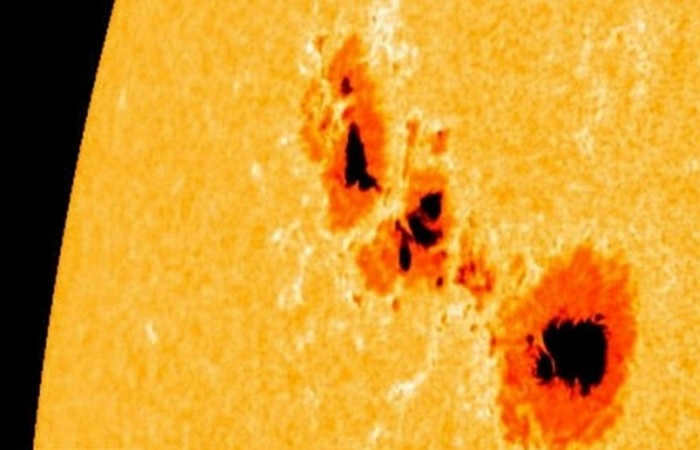
Occasionally, the surface of the Sun exhibits dark spots called sunspots. These spots are characterized by a slightly lower temperature (approximately 1226 degrees Celsius) compared to the surrounding solar surface, and they result from fluctuations in the Sun’s magnetic field. In some instances, these sunspots can be observed without the aid of optical instruments. On rare occasions, clusters of over 100 sunspots may emerge simultaneously, although such occurrences are extremely uncommon.
10. The Magnetic Field of the Sun Undergoes Transformation
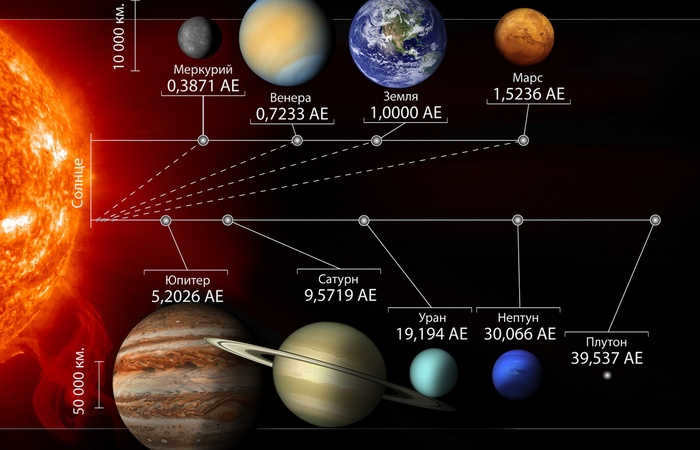
Approximately every 11 years, there is a phenomenon where the South and North magnetic poles on Earth switch positions. This occurrence is much less frequent compared to the Sun, as the last time it happened on our planet was approximately 800,000 years ago.
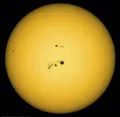
Areas of Expertise: Solar Physics Variability: Stationary Visible Stellar Magnitude: -26.73 Distance from the Sun: 0 sv. years Mass: 1 solar mass (M☉) Radius: 1 solar radius (R☉) Luminosity: 1 solar luminosity (L☉) Surface Temperature: 5800 K
Sun, the closest star and the primary celestial body in our Solar System.
Key features
The mean distance between the Earth and the Sun (astronomical unit, a. e.) is approximately 149 597 870 700 m (light takes about 500 s to travel this distance). The Sun is a ball of gas (plasma). It has a mass of 1.99-10^30 kg, which accounts for 99.866% of the total mass of the Solar System. The remaining 0.134% is made up of planets, their satellites, asteroids, comets, interplanetary dust, and gas. However, when it comes to momentum distribution, the planets contribute to about 98% of the total momentum in the Solar System. This suggests that the Sun rotates relatively slowly. Its radius measures 696,230 km, with a small compression of only 6 km difference between the polar and equatorial radii. The average density of the Sun’s matter is 1409 kg/m^3. The acceleration of gravity on the surface of the Sun is g_s = 274 m/s^2. To permanently escape the surface of the Sun, any neutral particle must have a velocity greater than or equal to the escape velocity of 617 km/s. The Sun rotates around its axis with an average period of approximately 27 days, but its rotation is differential. The equator has a rotation period close to 25 days, while the polar regions exceed 30 days. The combination of differential rotation and meridional circulation, which involves slow gas flows from the equator to the poles, plays a crucial role in the cyclic generation of magnetic fields on the Sun, leading to solar activity. The temperature of the Sun’s visible surface layers (photosphere) is 5800 K. At an average distance of 1 a. e. from the Sun, an area of 1 m^2 oriented perpendicular to the Sun’s rays receives 1367.6 W/m^2 of energy in 1 s (known as the solar constant). The total luminosity of the Sun, which is the amount of energy emitted by its entire surface in 1 s, is 3.846-10^26 W. The Sun has a visible stellar magnitude of m_V = -26.73 and an absolute stellar magnitude of M = 4.83. In terms of luminosity and spectrum classification, the Sun is a main-sequence star with luminosity class V and a yellow dwarf of spectral class G2 (denoted as dG2).
The Sun is not only a powerful source of light and heat, but also a significant emitter of radio waves. Specifically, the Sun’s chromosphere emits radio waves in the millimeter and centimeter ranges, while the solar corona emits radio waves in the decimeter and meter ranges. The Sun’s radio emission can be divided into two main components – constant and variable. The constant component corresponds to the radio waves emitted by the quiet Sun, while the variable component reflects the phenomena of solar activity and is observed in the form of bursts and noise storms. Unlike the radio emission of the quiet Sun, this variable radio emission has a non-thermal nature and can increase thousands and even millions of times during solar flares.
For a considerable period, the observation of the solar spectrum was limited to the visible part due to the Earth’s atmosphere. However, with the advancement of space exploration in the latter part of the 20th century, the capability to deploy telescopes beyond the confines of Earth’s atmosphere emerged, leading to the transformation of heliophysics and modern astronomy into all-wave disciplines. Presently, observations encompass both long-wavelength solar radiation, known as heliophysics, and various aspects of modern astronomy. The infrared segment of the spectrum and the radio range spanning from millimeter to kilometer wavelengths have experienced significant advancements in solar radio astronomy as they encounter minimal interference from the atmosphere. Conversely, short-wave radiation, including UV, X-rays, and gamma rays, is predominantly absorbed by Earth’s atmosphere. However, with the deployment of orbiting solar observatories, regular monitoring of the Sun in the UV and X-ray bands can be carried out. In certain instances, non-specialized telescopes facilitate the measurement of gamma ray fluxes, with energies reaching up to 100 MeV, originating from active solar events. Additionally, spacecraft play a critical role in continuously monitoring solar cosmic ray fluxes in various energy ranges, predominantly electrons and protons accelerated during solar flares, which significantly impact space weather in Earth’s orbit.
Where does the Sun’s energy come from?
Thermonuclear reactions, the primary source of solar energy, can only occur within the Sun’s core, where temperatures reach 15.6 million K and densities reach 1.6-10 5 kg/m 3 . The dominant thermonuclear reaction responsible for approximately 99% of solar energy is the proton-proton cycle, which ultimately results in the formation of a helium nucleus (alpha particles) from four hydrogen nuclei (protons). The mass of the resulting helium nucleus is slightly less than the combined mass of the four protons, and this difference in mass (known as the mass defect) is converted into energy in the form of neutrinos and high-energy gamma ray radiation. Another thermonuclear cycle, known as the carbon-nitrogen cycle, plays a minor role, contributing only about 1% of the Sun’s energy production. The efficiency of thermonuclear reactions within the Sun’s core is such that 7 grams of hydrogen are converted into radiation for every kilogram of hydrogen. Every second, approximately 4.3 million tons of hydrogen are “burned” in the Sun. Despite this seemingly extravagant consumption, the Sun has been able to sustain this mode of operation for about 4.5 billion years, with its massive size allowing it to continue for a similar duration. Gamma rays generated within the Sun’s core are repeatedly absorbed and re-emitted by atoms in the solar material as they make their way towards the surface. During this process, the gamma rays are “split,” with their energy being redistributed among less energetic quanta. As a result, the energy generated in the core is emitted from the Sun’s surface, primarily in the form of optical and infrared radiation. The journey of radiant energy from the core to the surface of the Sun takes approximately 1 million years.
Neutrino astronomy provides direct information about the progress of thermonuclear fusion reactions in the Sun’s core. Neutrinos generated in these reactions easily traverse the entire thickness of the solar sphere with minimal absorption. Some of these neutrinos that manage to reach the Earth can be detected by specialized neutrino detectors, commonly referred to as solar neutrinos.
The Sun’s internal composition

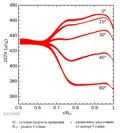
The movement of various indicators such as sunspots, flares, and fibers along the disk at different latitudes allows for easy tracing of the Sun’s differential rotation in the photosphere. In the convective zone, which is not visible to the naked eye, the distribution of the angular velocity of rotation with depth and heliolatitude was determined at the end of the 20th century using helioseismology methods (Howe et al., 2000). Figure 2 illustrates the radial and latitudinal distribution of the Sun’s angular velocity in both the convective zone and the radiative transfer zone, based on helioseismological data. Each curve on the graph corresponds to a specific heliographic latitude.
In Fig. 2, the solar rotation exhibits a distinct pattern: from the core to the tachocline, where the ratio of the radial distance from the center of the Sun to its radius ( r / R ) (r/R) ( r / R ) is approximately 0.68, the Sun rotates uniformly, with the same angular velocity as the photosphere at latitude 34 o . However, a significant latitude-radial gradient of rotation emerges in the tachocline, with equatorial layers rotating faster and high-latitude layers slowing down. Beyond the tachocline, the radial gradient diminishes and each latitude maintains its own rotational velocity. As the Sun’s surface is approached, from the layer with r / R = 0.96 to r / R = 1, the angular velocity of rotation decreases at all latitudes. This region is known as the leptocline. These characteristics play a crucial role in understanding how the Sun’s differential rotation generates magnetic fields in its convective zone.
The Atmosphere and Magnetic Field of the Sun
The Sun’s photosphere, which is a thin layer approximately 300 km in thickness, displays evident signs of convection that take place in the layers beneath. These signs are observed as cell granulation, with granules measuring about 10 3 km in size and lasting for approximately 10 minutes. The plasma velocity within the cells is around 1 km/s. However, in the direct region of the photosphere, convection is slightly diminished, and radiant energy transfer begins to dominate once again.
Aside from granulation, there is another significant occurrence of convective processes on the Sun known as supergranulation. Supergranulation is characterized by cells that have a spatial size of approximately 36 thousand km, a lifespan of around 36 hours, and radial current velocities (the horizontal spread of gas from the center of the convective cell to its edges) of about 0.5 km/sec. Furthermore, there is compelling observational evidence that suggests the existence of massive convective cells on the Sun, measuring approximately 250 thousand kilometers in size and with velocities not exceeding 0.1 km/s. Determining the lifespan of these colossal convection cells is a challenging task.
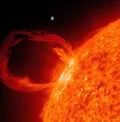
Solar wind and the extension of the Sun’s atmosphere

The interplanetary stations Voyager 1 and Voyager 2, which were launched in 1977 with the purpose of exploring Jupiter and Saturn, completed their journey across the entire solar system in late 2010. They then began to traverse the heliopause from two separate points, marking their departure from the solar system and entry into a region dominated by the solar wind. In August 2012, Voyager 1 reached a distance of 121.7 astronomical units from the Sun, officially venturing beyond the solar system. The valuable data gathered from this mission has greatly contributed to our understanding of the heliopause and the physical conditions present within it.
The website astropage.ru utilizes cookies and other services to collect technical information about visitors, such as their IP address and location data, in order to enhance performance and functionality.
By continuing to browse and utilize our website, you are automatically consenting to the use of these technologies.
Twilight beginning/end: 02:10/22:56

